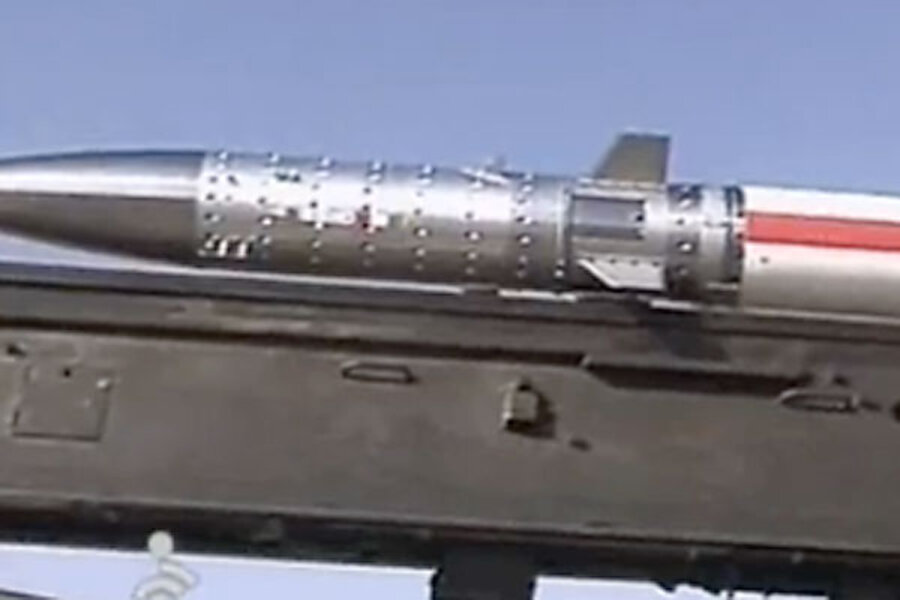Iran's rocket launch breaks no zoological barriers. Our top 10 animal space flights.
Loading...
Iran’s reported launch of a rat, two turtles, and several worms into space on Feb. 2 isn’t likely to unlock any new discoveries.
While Iranian President Mahmoud Ahmadinejad called the launch an “unparalleled” scientific breakthrough, according to the official Press TV, all of these species visited space more than four decades ago.
France flew the first rat into space in 1961, and China launched mice and rats in 1964 and 1965. The Soviet Union launched the first tortoise into space in 1968, along with a few worms. In addition, among other specimens, over the years, mankind has also put Madagascar hissing cockroaches, Mexican jumping beans, and South African flat rock scorpions into space.
So why is Iran launching rats, turtles, and worms now?
“It’s a peaceful demonstration of advanced technological capabilities with national security implications,” says John Logsdon, a space policy expert at George Washington University and member of the NASA Advisory Council. The launch shows that “Iran probably has a rocket booster capable of launching warheads over the Middle East.”
Here's a video of the launch:
It was unclear if Iran launched the Kavoshgar 3 (Explorer) rocket into orbit or merely above the 100-kilometer threshold of space. It was also unclear if Iran planned to recover the animals.
According to Press TV, the rocket will transfer “telemetric data, live pictures, and flight and environmental analysis data. The Iranian Aerospace Organization (IAO) says live video transmission and the mini-environmental lab will enable further studies on the biological capsule – carrying a rat, two turtles and worms – as it leaves earth's atmosphere and enters space.”
Such an experiment could test the affects of zero-gravity on an organism’s behavior and orientation, says Logsdon, who founded GW's Space Policy Institute and served as its director from 1987 to 2008.
Mr. Ahmadinejad called the "miraculous satellite projects...key to the connection between God and mankind." But while launching animals into space is fairly cheap – on order of tens of millions of dollars – Logsdon says launching humans costs in the tens of billions.
“The questions is,” he said by telephone Wednesday, “Is this an early precursor of Iran being able to put humans into space?”
Iran launched its first home-built satellite into space a year ago. The Monitor reported it as a scientific milestone for the Islamic Republic that heightened concerns in the West that its expanding rocket technologies could be put to military use.
Now coming on the heels of the Obama administration's announcement to deploy new defenses in the Persian Gulf, Tuesday's test could raise alarms, reports the Wall Street Journal: “Many of the same technologies used in satellite development can be applicable to missile-delivery systems.”
The Monitor previously published this list of milestones in space. Here’s a new list of top 10 non-human zoological space flights, in chronological order:
--
10. Fly: In 1947, the US launched the first animals into space: fruit flies.
9. Rhesus Macaque: In 1949, the US sent the first monkey, a Rhesus Macaque, into space. It died during the return landing. Not until 1959 did the first monkeys to survive spaceflight.
8. Mouse: In 1950, the US put a mouse in space.
7. Dog: In 1951, the Soviet Union launched the dogs Tsygan and Dezik into space, though the first canine didn’t go into orbit until 1957, and it died. Not until 1960 did the Soviet Union send dogs into orbit and return them alive.
6. Squirrel Monkey: In 1958, the US sent Gordo, a South American squirrel monkey, into space for eight minutes of weightlessness. But it too died on return when a parachute failed.
5. Chimp: In 1961, Ham the chimp was rocketed up. Subject to electric shocks during the flight, Ham demonstrated the ability to perform tasks during spaceflight. Later that year, Enos the chimp became the first chimpanzee to orbit the Earth.
4. Frog: In 1961, shortly after the first chimp made the grade, the Soviet Union sent guinea pigs and frogs into space.
3. Feline: In 1963, France launched Felix the cat into space.
2. Tortoise: In 1968, the Soviet Union sent the first tortoise into space. It was also one of the first species sent into deep space, flying more than 100 kilometers above the earth’s surface.
1. Fish: In 1973, the US sent the first fish (a mummichog) into space.





